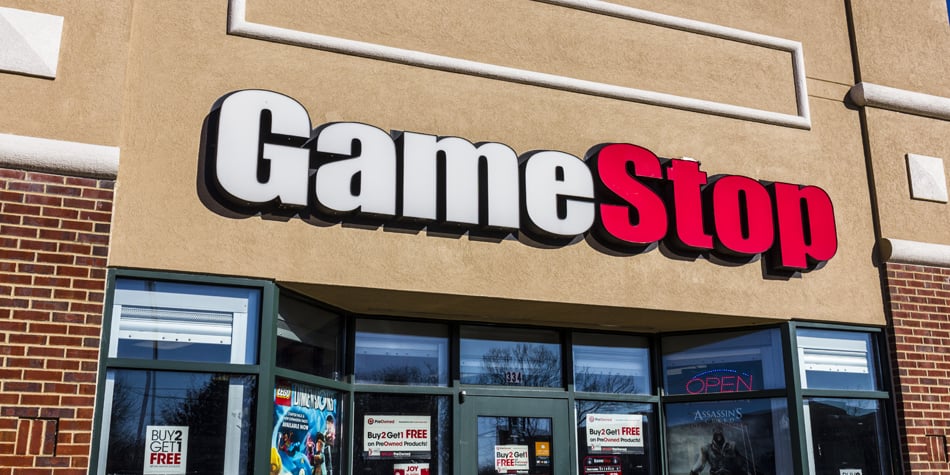Retail interest in GameStop (NYSE:GME) soared last year after the WallStreetBets Reddit group, whose members numbered in the millions, provoked a speculative buying frenzy. GME stock shot up from less than $20 a share to an all-time high of $483 in just over two weeks as meme-stock mania took hold.

Since that high, GME stock has plummeted nearly 80%, falling to the $100 level. Year to date, shares are off 32%, compared with a 10% drop in the S&P 500.
The bearish trend in GME stock is not likely to have taken investors by surprise amid a gloomy macroeconomic backdrop that hit speculative growth companies hard.
With that being said, let’s have a look at GameStop’s momentum, financials and valuation to try to identify where the stock is headed.
Sentiment on GME Stock Remains Bearish
In early January of last year, as meme-stock mania broke out, GME stock was the most shorted stock in the market, with peak short interest north of 140%. At the end of February 2022, GameStop’s short interest stood at 18.6%, well below the peak but up from around 10% in mid-November.
Investors might consider rising short interest to be a buoyant indicator, suggesting a short squeeze revival for shares of the video-game retail chain operator. However, a short squeeze in GME stock is doubtful.
First, the percentage of shorts is not powerful enough to initiate a squeeze. Second, GameStop’s market capitalization now stands at approximately $7.7 billion, as opposed to only $1.2 billion before the start of the meme-stock phenomenon in December 2020.
To spur a significant bullish move in GME stock, retail investors would have to accumulate massive bullish exposure. It’s much more likely that bearish sentiment in shares will persist.
According to TipRanks, the average analyst target for GME stock is $61.50, implying 39% downside from the current price.
Steady Losses Will Continue to Pressure Shares
GameStop has struggled to deliver consistent growth and profitability to satisfy shareholders. Although retail interest for the video game specialist climbed in 2021, revenue decreased 21% to $5.1 billion.
Analysts expect the company to deliver top-line growth of 17% this year. However, revenue is forecast to contract slightly in 2023, and the company is not expected to turn a profit until 2024 or later.
GameStop’s net loss has decelerated in the past two years. Yet, analysts foresee a net loss of $169 million in 2022 and $212 million in 2023. Given these poor financials, additional downside in GME stock is possible, if not probable.
On a brighter note, GameStop’s long-term net debt stood at $44.8 million in October, down 79% year over year. This low amount of debt, along with $1.4 billion in cash and cash equivalents, should help GameStop develop future markets.
However, the company also said inventories surged by 32.5% year over year to $1.14 billion in the third quarter. Management tried to justify increasing inventories as a strategic investment decision to meet increased customer demand and mitigate supply chain issues. But higher inventories could also indicate that some products are phasing out or that sales are slowing. If that is the case, the company may have to sell inventory at a discount, further dimming the company’s financial picture.
How GME Stock Compares To Its Peers
GameStop is expected to release fourth-quarter and full-year 2021 results on March 17. Ahead of the report, let’s see how GME stock trades compared to some of its peers.
GME’s valuation metrics look overstretched. For instance, it has a price-to-book ratio of 5.16. The video-gaming company has a more reasonable enterprise value (EV)/revenue of 1.41. Nevertheless, this is pricey for a company that is not expected to generate a profit in the next two years.
Best Buy (NYSE:BBY), one of GameStop’s closest peers, has a higher P/B ratio of 5.39, but trades with a lower EV/revenue of 0.45. Meanwhile, Conn’s (NASDAQ:CONN), a retailer of consumer electronics and entertainment products, is currently trading at a P/B of 0.85 and EV/revenue of 0.35.
While the valuation metrics of these three companies do not differ drastically, Best Buy and Conn’s businesses are stronger, so they deserve to trade at a premium compared to GameStop.
All in all, I am bearish on GME stock. Rising short interest and the lack of consistent revenue growth and profits will continue to act as headwinds for shares.
On the date of publication, Cristian Docan did not have (either directly or indirectly) any positions in the securities mentioned in this article. The opinions expressed in this article are those of the writer, subject to the InvestorPlace.com Publishing Guidelines.
Cristian Docan, a contributor for InvestorPlace.com, has been writing stock market-related articles for Seeking Alpha, Stocknews, and Wealthpop since 2017. He takes a fundamental and technical approach in evaluating stocks for readers, focusing on momentum investing and macro-driven strategies.
